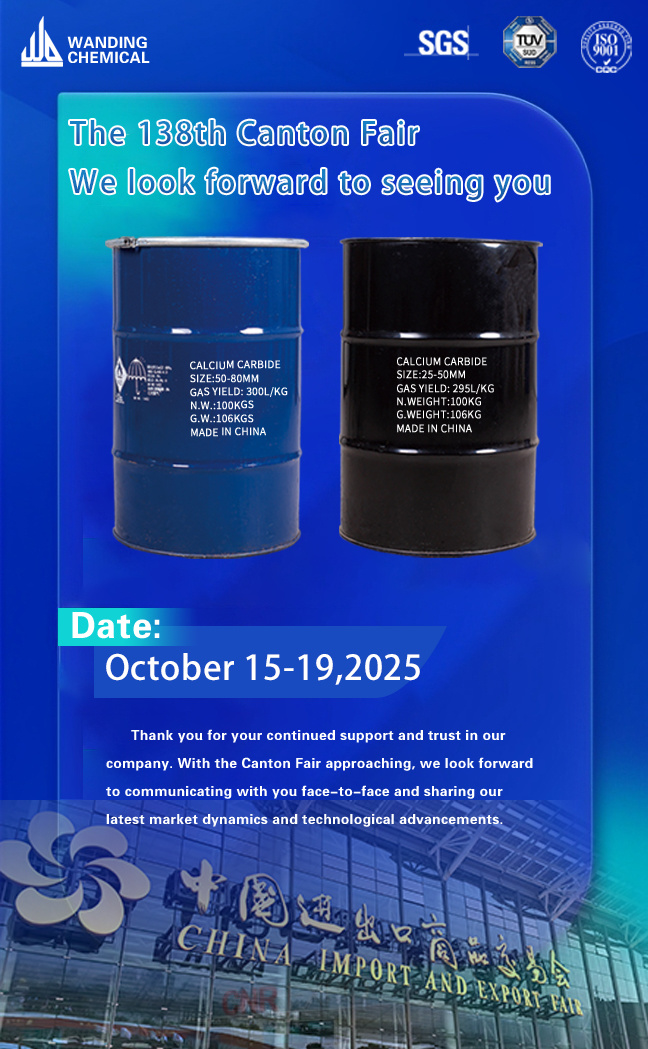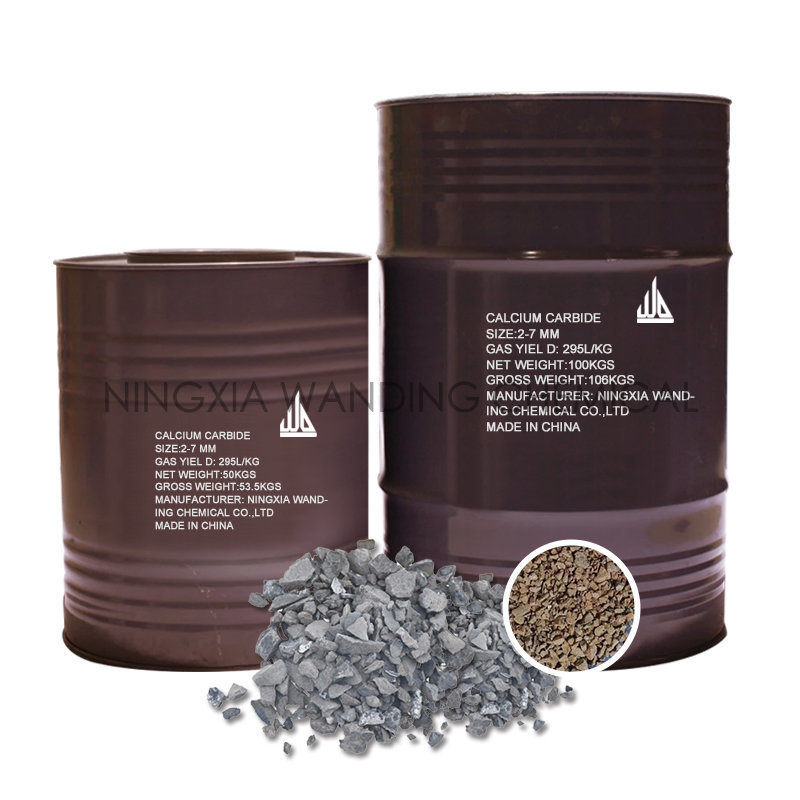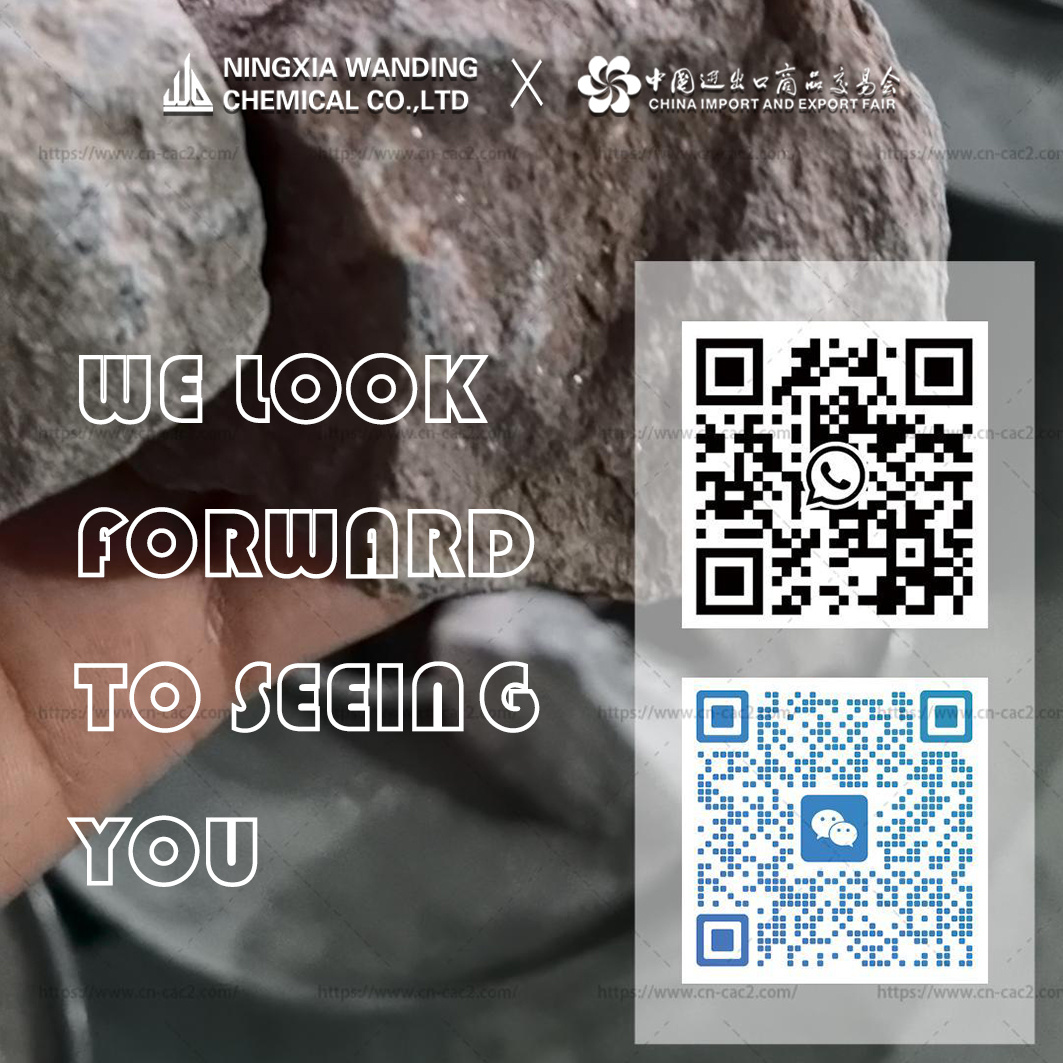Unlocking the Power of Calcium Carbide: A Comprehensive Guide
Release Time:
2025-03-03
Unlocking the Power of Calcium Carbide: A Comprehensive Guide Table of Contents Introduction to Calcium Carbide Chemical Properties of Calcium Carbide Methods of Producing Calcium Carbide Applications of Calcium Carbide in Industry Benefits of Using Calcium Carbide Safety Considerations in Handling Calcium Carbide Environmental Impact of Calcium Carbide Production
Unlocking the Power of Calcium Carbide: A Comprehensive Guide
Table of Contents
- Introduction to Calcium Carbide
- Chemical Properties of Calcium Carbide
- Methods of Producing Calcium Carbide
- Applications of Calcium Carbide in Industry
- Benefits of Using Calcium Carbide
- Safety Considerations in Handling Calcium Carbide
- Environmental Impact of Calcium Carbide Production
- The Future of Calcium Carbide in Industry
- Frequently Asked Questions
- Conclusion
Introduction to Calcium Carbide
Calcium carbide (CaC₂) is a chemical compound that has garnered significant attention in various industries due to its versatile applications. This compound is primarily recognized for its role in producing acetylene, a key ingredient for welding and cutting metals. Additionally, calcium carbide has found uses in the manufacture of chemicals and fertilizers, making it an essential component in the agribusiness and chemical sectors.
In this comprehensive guide, we will delve into the chemical properties, production methods, applications, benefits, and safety considerations related to calcium carbide. Our aim is to provide a thorough understanding of this important industrial compound and to discuss its implications for the future.
Chemical Properties of Calcium Carbide
Calcium carbide is a unique compound characterized by its distinct chemical structure and properties. Understanding these properties is crucial for its effective application in various industries.
1. Composition and Structure
Calcium carbide consists of calcium and carbon atoms, with a molecular formula of CaC₂. The compound typically occurs as a greyish-black solid and is known for its crystalline structure. When exposed to moisture, calcium carbide reacts vigorously, producing acetylene gas and calcium hydroxide.
2. Physical Properties
- **Appearance:** Grey to black solid
- **Melting Point:** Approximately 2160 °C (3910 °F)
- **Density:** About 2.22 g/cm³
- **Solubility:** Highly reactive with water, producing acetylene gas
These physical properties make calcium carbide suitable for specific industrial applications, particularly in environments where high temperatures and reactive materials are involved.
Methods of Producing Calcium Carbide
The production of calcium carbide typically involves the carbothermic reduction of lime (calcium oxide) with carbon in an electric arc furnace.
1. Raw Materials
The primary raw materials for producing calcium carbide include:
- **Lime (CaO):** Sourced from limestone.
- **Carbon:** Obtained from coke or other carbonaceous materials.
2. The Carbothermic Process
The production process involves heating a mixture of lime and carbon in an electric arc furnace at temperatures exceeding 2000 °C (3632 °F). Under these conditions, the lime is reduced to calcium carbide through the following reaction:
\[ \text
The resulting calcium carbide is then cooled and processed for various applications.
Applications of Calcium Carbide in Industry
Calcium carbide is used in a multitude of applications across different industries, primarily due to its ability to produce acetylene.
1. Acetylene Production
The most prominent use of calcium carbide is in the generation of acetylene gas. When calcium carbide reacts with water, it produces acetylene and calcium hydroxide:
\[ \text
Acetylene is essential for oxy-acetylene welding and cutting processes, making calcium carbide vital in metalworking.
2. Chemical Manufacturing
Calcium carbide serves as a precursor in the production of various chemicals, including:
- **Calcium Cyanamide:** Used as a fertilizer and herbicide.
- **Calcium Acetylide:** Utilized in organic synthesis.
3. Carbide Lamps
Historically, calcium carbide was employed in carbide lamps, which produced acetylene gas to create light. Although less common today, they were widely used in mining and caving.
Benefits of Using Calcium Carbide
The utilization of calcium carbide offers several advantages across multiple sectors.
1. Cost-Effectiveness
Calcium carbide is an economical source of acetylene, providing an affordable option for industries reliant on this gas for welding and chemical production.
2. Versatility
The diverse applications of calcium carbide make it a versatile compound suitable for different industrial processes, enhancing operational efficiency.
3. High Purity Acetylene Production
Using calcium carbide allows for the production of high-purity acetylene, essential for specialized applications in the chemical and welding industries.
Safety Considerations in Handling Calcium Carbide
While calcium carbide is beneficial, it requires careful handling due to its reactive nature.
1. Reactivity with Water
Calcium carbide reacts vigorously with water, producing flammable acetylene gas. This reaction can lead to explosive situations if not managed properly.
2. Protective Equipment
When handling calcium carbide, it is essential to wear appropriate personal protective equipment (PPE), including gloves, goggles, and respirators, to mitigate exposure risks.
3. Storage Guidelines
Calcium carbide should be stored in a cool, dry place away from moisture and incompatible materials to prevent unintended reactions.
Environmental Impact of Calcium Carbide Production
The production of calcium carbide can have environmental implications that must be addressed.
1. Carbon Emissions
The carbothermic process used for producing calcium carbide generates significant carbon dioxide emissions, contributing to greenhouse gas concerns.
2. Waste Management
Proper waste management practices are crucial in mitigating the environmental impact of calcium carbide production, including the treatment of byproducts and emissions.
The Future of Calcium Carbide in Industry
As industries continue to seek sustainable practices, the production and application of calcium carbide may evolve.
1. Innovations in Production
Research into more sustainable methods of producing calcium carbide, such as using renewable energy sources, could reduce the environmental footprint associated with its manufacture.
2. Expanding Applications
Emerging technologies and industries may find new uses for calcium carbide, particularly in the fields of agriculture and chemical engineering, indicating a promising future for this compound.
Frequently Asked Questions
1. What is calcium carbide used for?
Calcium carbide is primarily used for producing acetylene gas, which is essential for welding and cutting. It also serves as a precursor in chemical manufacturing.
2. Is calcium carbide safe to handle?
Calcium carbide can be hazardous due to its reactivity with water, producing flammable acetylene gas. Proper safety measures, including PPE and storage guidelines, are necessary.
3. How is calcium carbide produced?
Calcium carbide is produced through the carbothermic reduction of lime (calcium oxide) with carbon in an electric arc furnace.
4. What are the environmental impacts of calcium carbide production?
The production process generates carbon dioxide emissions and requires careful waste management to minimize environmental effects.
5. Are there any alternatives to calcium carbide in industrial applications?
While calcium carbide is widely used, alternatives such as chemical synthesis methods for acetylene production are being researched, although they may not yet match the efficiency or cost-effectiveness of calcium carbide.
Conclusion
Calcium carbide is a significant compound with diverse applications, primarily in the production of acetylene and various chemicals. Its unique properties and cost-effectiveness make it a valuable resource in industrial processes. However, safety considerations and environmental impacts must be carefully managed. As we look to the future, ongoing innovations in production methods and the exploration of new applications may enhance its role in modern industry. Understanding calcium carbide's intricacies empowers industries to leverage its potential responsibly while addressing the challenges it presents.
News Hotspot




















